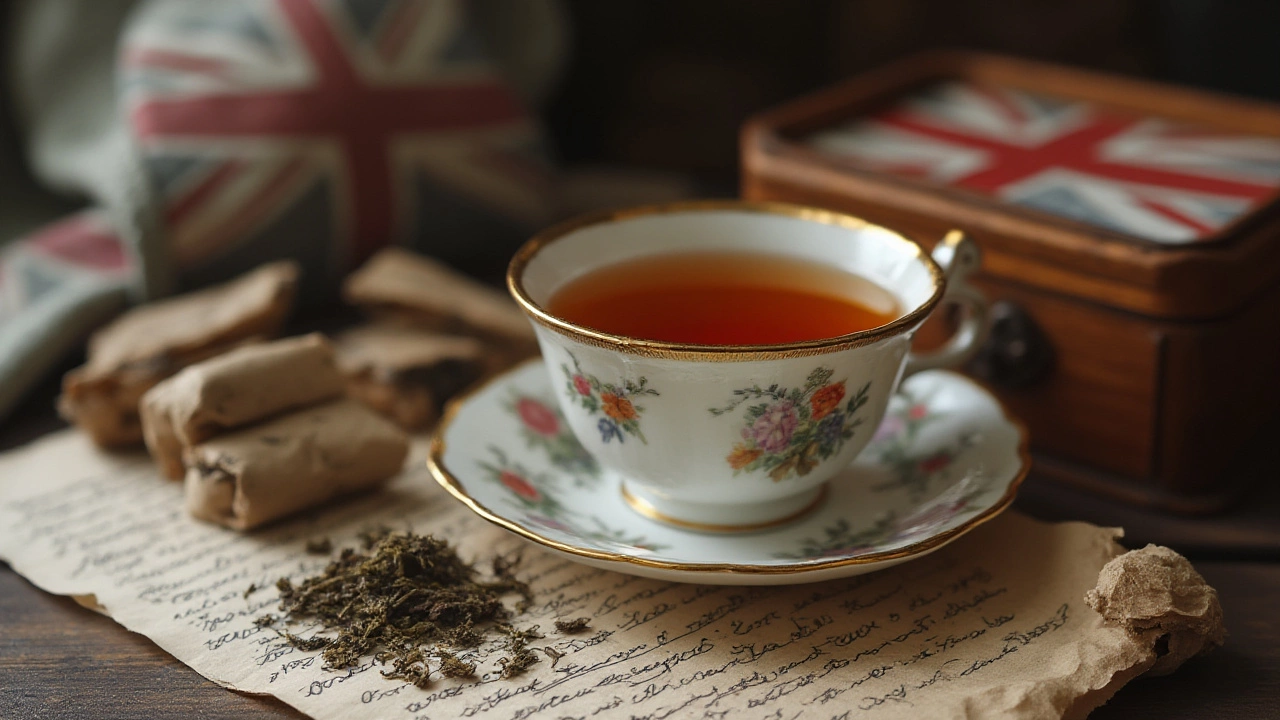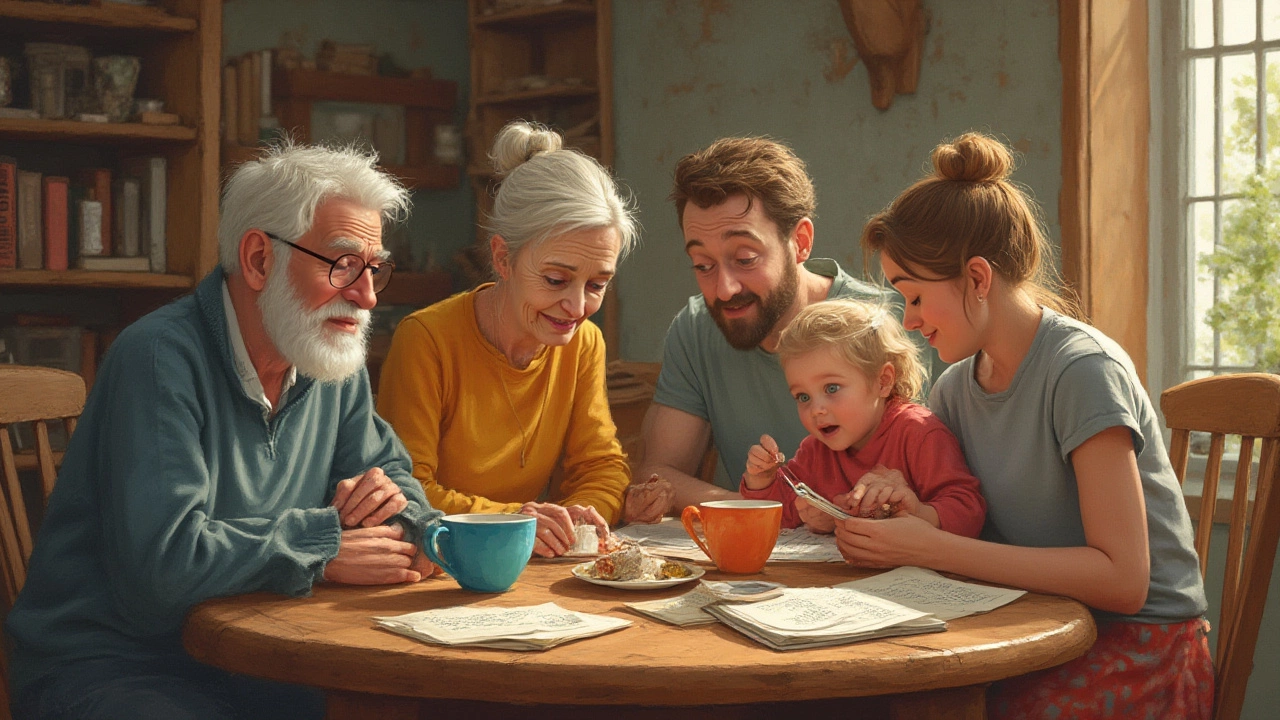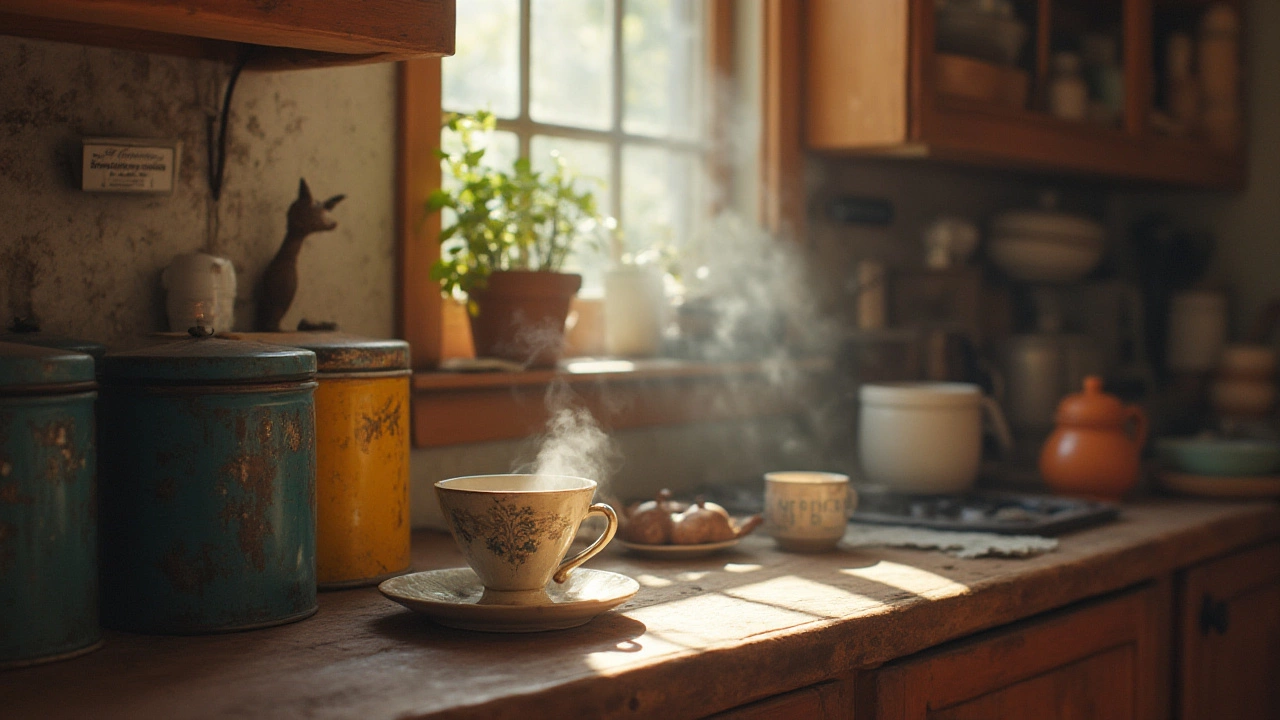Ever stumbled across a forgotten box of tea at the back of your pantry, then squinted at the date and wondered: Can I drink 10-year-old tea? You wouldn’t be the first to face down a dusty tin labeled 2015 and ponder your odds. Some people shrug and brew anyway. Others eye the leaves like they might explode. The answer’s not as simple as yes or no—because it depends on the tea, how it’s been kept, and what you’re hoping for from your cup.
How Long Does Tea Really Last?
So, about that 10-year-old tea. Most folks don’t realize that tea isn’t like milk—it doesn’t spoil overnight, turn bright green, or start stinking up the place. But time changes tea. Officially, tea boxes in the supermarket usually carry a “best by” date rather than a hard expiration. That date, often set two to three years out, is about peak flavor, not safety. Tea won’t become toxic with age, but its taste, aroma, and zing can fade slowly. Properly stored dried tea—the kind that’s never seen moisture or funky odors—can often outlast those best-by suggestions, sometimes by years.
There’s one group of people who actually celebrate tea’s aging: fans of pu-erh and other vintage teas. Chinese pu-erh, for instance, gets better with time (sometimes up to 50 years, if you believe the hype), acquiring earthy, mellow notes prized by collectors and tea aficionados. But for your typical English Breakfast or green tea, a decade in the cupboard is like running a marathon in flip-flops—doable, but not ideal.
Your old tea’s real enemies? Light, moisture, and air. Expose your leaves to any of these, and you’ll get bland tea at best or, in worst cases, musty, stale, or moldy leaves. Mold is a real dealbreaker. It doesn’t matter if you started with the fanciest Darjeeling on earth—if you open that canister and see white fuzz or catch a whiff of mildew, do yourself a favor and toss it out. Don’t try to salvage it. Even experts say moldy tea is a risk you don’t want to take.
The lesson: while dry tea can remain safe much longer than most pantry items, every year on the shelf costs it a bit of aroma and flavor. Stale tea isn’t dangerous, just disappointing. If you’re hoping for real complexity, special aged teas are the exception—not the rule for old bags from your office kitchen.
What Happens When You Drink Old Tea?
If you’re thinking about brewing a cup from leaves older than your last phone, you might picture horror movie scenarios—spoiler alert, it usually doesn’t work that way. Drinking properly stored old tea (even if it’s past its “best by” date) is nearly always safe. That means it’s dry, hasn’t picked up funky smells from nearby spices or coffee, and there’s no visible mold growth.
The main change you’ll notice? The flavor. With time, volatile aromatic compounds in tea fade. That means black tea might lose its briskness, green tea its grassy edge, and herbal teas all their punch. The antioxidants and caffeine in tea also degrade, though slowly. So if you drink tea for the health benefits—the catechins and flavonoids—be ready for less: a study from the Journal of Food Science found that green tea catechins dropped by half after five years of storage at room temperature. Ten years on? Expect even less of the good stuff.
What about the taste? Imagine making soup with dried herbs from a jar you found from 2015. They might still give a hint of flavor, but you’ll need to double up, and even then, your taste buds might strain to notice. Tea is the same. People who’ve tried decade-old Lipton or Bigelow report bland, flat brews that need lots of honey—or a strong dose of nostalgia—to go down smoothly.
As for danger, the true risk kicks in if the tea’s gotten damp. Dampness allows molds and bacteria to flourish. And you don’t want a mouthful of aflatoxins, produced by some molds, which have been linked to a bunch of health problems. If your tea smells off, looks clumpy, or seems dusty with anything that isn’t tea powder, skip the mug and cut your losses. Whenever in doubt, give a sniff and peep inside the bag or tin before brewing.

The Science Behind Tea Aging: When Does Old Tea Taste Better?
The idea of drinking decade-old tea isn’t always a punchline, especially if you talk to tea collectors in China or Taiwan. For pu-erh and some white teas, age unlocks wild flavors—woodsy, earthy, almost like good cheese or whiskey. But that magic doesn’t apply to the dusty green bags in your desk drawer.
With most teas, oxidation is the big enemy. When tea meets air, its many flavor compounds slowly oxidize and break down, especially for delicate greens and fragrant oolongs. Black teas, which undergo oxidation during processing, can actually mellow a bit with time, but only if stored perfectly. Pu-erh teas, made from special fermentation and microbial activity, transform over years or decades—and can fetch prices in the thousands. A rare, 40-year-old pu-erh recently went for $3,500. Those teas mellow, lose bitterness, and develop sweet, earthy notes—sort of the bourbon barrel trick, but with leaves instead of corn mash.
So, how do you know if you’ve got a vintage gem or just an old box of nothing? Here’s where origin and type matter. If you’re holding aged pu-erh or a famous white tea that’s known for mellowing nicely, you could be in for a treat. Almost everything else? It probably lost most of what made it special by the five-year mark, especially if it was a cheaper blend to begin with.
Here are a few quick rules:
- If it was designed to age (pu-erh, some white teas), old really can be gold.
- If it’s green, herbal, or flavored tea—freshness is your best friend.
- Black teas land somewhere in the middle: a few years might smooth rough edges, but a decade is pushing your luck, unless storage conditions were spot-on.
If you’re curious about the real difference between fresh and aged teas, try a side-by-side tasting. You’ll probably notice the old batch tastes flatter and thinner, while the newer stuff offers brighter, fuller notes. For specific teas, consult the list below—just remember, even the best vintage teas need to be stored in a cool, dark, dry place to unlock their full aged potential.
Testing and Storing Tea for Maximum Longevity
If you found a forgotten box of tea, and want to know if it’s up for one last steep, here’s what you need to check. First, open the packaging. Do you see fuzzy white, green, or black patches? That’s mold—game over. Does it smell like tea, or does it smell musty, sour, or off? Trust your nose—if it smells bad, don’t risk it. If the color of the leaves looks odd—super pale or blotchy—skip brewing.
If it passes those checks, you can always brew a small cup. Taste it. Old tea loses flavor but shouldn’t taste weird or unpleasantly bitter. If it does, time to move on. Some people report a strange metallic or chemical tang from very stale tea—another sign it’s past even its backup-emergency use.
How do you keep tea fresh for next time? Here’s a pro tip—think about your tea the way you think about coffee or spices. Oxygen, light, moisture, and heat are the enemies. The right storage can add years—literally years—to good quality dried tea. Use air-tight containers, store them away from sunlight and temperature swings, and skip the fridge (condensation is a killer). For big investments, like rare white or pu-erh teas, tea drinkers spend money on clay or ceramic jars, sometimes with humidity packs to keep the balance just right.
Here’s a quick look at how long different teas might last when stored properly:
| Tea Type | Usable Shelf Life | Best Storage |
|---|---|---|
| Green Tea | 6-12 months | Cool, airtight, dark place |
| Black Tea | 1-3 years | Airtight, dry, out of sunlight |
| Oolong Tea | 1-2 years | Airtight, away from aromatics |
| White Tea (aged types) | 5+ years | Porous or clay jars, dry and dark |
| Pu-erh (raw) | 10-50 years | Clay jars, stable humidity |
| Herbal/Flavored Tea | 6-12 months | Airtight, no light or heat |
*Tip: If your old tea comes in bags, the paper and glue can break down over time, especially if exposed to moisture or heat, so inspect carefully.

Should You Drink 10-Year-Old Tea? Let’s Be Real
So, back to that original question: should you actually brew up a cup of 10-year-old tea just because you found it? If it’s been sealed up tight, shows no signs of mold, and still smells somewhat like tea, it’s probably safe. But expect the experience to be more about the ritual than the taste.
If you’re hoping for a caffeine kick or antioxidants, there’s not much left to squeeze out after a decade. And don’t bother with fruity or herbal blends—those turn flavorless or weird pretty fast. It’s a fun experiment, especially if you want to see what time does to a cup. Sometimes nostalgia tastes stronger than flavors anyway. On the other hand, if there’s anything off about the smell or look, give it a respectful burial (preferably in your compost heap).
One cool thing: old tea leaves don’t have to go to waste. Some folks use them to deodorize shoes, freshen up fridges, or spice up flower arrangements. And if you’re a gardener, even expired tea can give plants a gentle nutrient boost—in the soil, not the cup.
At the end of the day, drinking 10-year-old tea isn’t a wild gamble, but it’s not likely to blow your socks off in flavor or health perks. If you want all the subtle notes and zing, grab a fresh pack. If you want a bit of curiosity and a story, go ahead. Who knows, maybe you’ll find your new favorite weird ritual—just skip the moldy parts and keep your expectations realistic.


